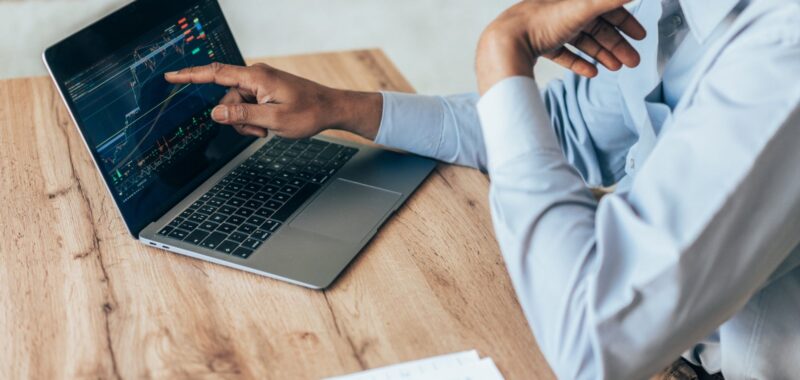Opinions expressed by Entrepreneur contributors are their own.
There’s no doubt that money allows you to take a lot of shortcuts in life. You can hire all sorts of people to give you expert opinions. You can even hire them to do many complicated tasks. Money makes your surroundings as lush and tailored as you wish, and you can have people set you up with the latest technology.
You can choose to never stand in line or wait for much of anything. You can even buy an electrical stimulation device that will grow your muscles while you sit back and sip a latte.
Then there’s day trading.
In some ways, you’re better off learning to day trade when you don’t have much money. Why is that? Because day trading is a special journey where you’ll need or encounter five things along the way. Here’s what you can expect.
1. You’ll need knowledge
Day traders have a language of their own to describe what they’re looking at while simultaneously viewing multiple charts and ratios. Fortunately, you can begin your journey with surprisingly little knowledge.
Once you have a few basic concepts and your trading station is set up properly, you’ll first be looking for certain highly specific situations. Money can’t help you much here — you need to internalize one situation or pattern at a time until you instantly recognize it.
Related: How I Turned $583 into $10 Million by Day Trading
2. You must practice
This is another realm where more money is no help: you must practice to become good at seeing an opportunity, confirming that it meets your criteria and taking the trade. Then, you must know when to buy more, hold, scale down or get out. You’re getting fluent in a highly complex system, and that work happens between your ears.
There’s one thing I must mention that’s not so much of a shortcut as a pain reliever, and that’s trading in a simulator. These tools allow you to trade in the very stocks that are moving today, but you’re doing so with virtual money. Simulators are not perfect, but they will save you all kinds of money and grief. You’ll indeed feel differently when you later trade with real money, but at first, that’s not important. What counts is getting proficient in your practice and skills.
3. You’ll need patience
You must run the trading process thousands of times, and having real losses and gains does not increase your proficiency. On the contrary, unless you have money to burn, it will be easy to conclude that this whole day trading thing is for the birds. If risking no money means that you stick with it longer, then that’s a clear benefit.
Related: Is Your Opinion of Day Trading Accurate? Take This Quiz
4. You must develop discipline
This is where money can actually slow your progress. As you take one trade after another, you will have periods of several losing trades in a row. Guaranteed. If you’re loaded with dough, you might lose a big wad of cash, shrug, and replace it by writing a check to replenish your account.
That’s learning the wrong lesson. The money becomes a cushion against landing hard on your back and realizing that you can’t afford to do that again. In my case, I was down to chopping wood for heat in a Vermont winter, so I didn’t have to pay $500 to refill the furnace oil tank.
Your trading discipline comes from setting limits and sticking to them, regardless of your emotions.
Must you hit rock bottom to become a successful trader? No, but in a sense, it’s the shortest route to getting tough with yourself about following your trading parameters.
If you trade long enough and pay close attention, you’ll discover many things about yourself. You’ll learn the warning signs you’ve been emotionally hijacked and are “revenge trading” to counter that last bad trade. You will become sensitive when you have no more gas left in the brain tank and can’t make proper judgments about another trade. That might sound easy, but the urge is strong to take another look and take just one more trade. Early on, before my discipline muscle was strong enough, I had to close my laptop, unplug it and lock it in my car so I wouldn’t look at it.
By the way, the pursuit of discipline in day trading never ends. To this day, I catch myself experiencing FOMO or another emotion, and I must remind myself of my maximum loss-per-trade and loss-per-day criteria. I’ll even instruct my brokerage account to temporarily take those decisions out of my hands and enforce them if my discipline needs shoring up. And if things get out of hand in a hurry, I’ll check myself into what I call “trader rehab”: it’s a highly constrained and systematic process to rebuild my confidence after one or more big losses.
Related: Do You Know How to Lose? 4 Principles for Cutting Your Losses
5. You need to cultivate educated intuition
That’s my term for what you will have if you stick with this journey long enough. It’s where you’ll have internalized that knowledge, experience, and practice so that you can make mostly the right decisions in the heat of the moment.
Even this condition is not permanent. If elite athletes take a little time off, it takes some time to get back into top form, and that’s also true with the mental athletics of day trading.
The market doesn’t care
That’s a beautiful thing about day trading. There are relatively low barriers to entry into this profession. No one cares what color your skin is or your gender, upbringing or education. Every day, the slate is wiped clean. Rich people may regularly enjoy paying for experiences like concerts and trips. However, experiences are not the same as experience, which must be gained step-by-step in day trading.

